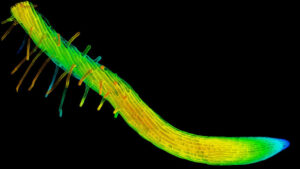
New research reveals that taking a quick walk immediately after eating is a simple yet powerful way to keep post-meal blood sugar in check, making it a practical strategy for healthier living. This study, published in the journal Scientific Reports, examined whether a 10-minute walk immediately after consuming glucose would improve post-meal blood sugar control more effectively than a 30-minute walk starting half an hour after glucose intake.
The findings indicate that both approaches improved blood sugar control compared to resting, but the 10-minute walk immediately after glucose intake was uniquely effective at reducing peak glucose spikes.
Understanding Blood Sugar Control
Controlling blood glucose levels after meals, known as postprandial glucose control, is essential for reducing the risk of various health issues, including cardiovascular disease and dementia. Spikes in blood sugar after eating contribute to higher glycated hemoglobin levels, a key marker of long-term glucose control, and are linked to increased oxidative stress that can damage blood vessels and impair cognitive function.
Regular physical activity has been shown to help reduce these spikes, and current guidelines recommend at least 30 minutes of moderate-intensity exercise five times per week. However, many people struggle to meet these exercise goals due to time constraints, low motivation, or physical limitations, such as during pregnancy.
Exploring Practical Alternatives
To make exercise more accessible, researchers have explored shorter, more feasible alternatives. One study found that a 10-minute walk 30 minutes after dinner was as effective as a 30-minute walk in controlling post-meal blood glucose levels. Another suggested that walking immediately after a meal may be even more beneficial than waiting.
About the Study
The clever study design had each person try all three routines (rest, short walk, long walk) in random order to get the clearest comparison. Researchers from Ritsumeikan University aimed to determine whether a 10-minute walk taken immediately after glucose intake could be more effective than the commonly recommended 30-minute walk taken later. Their goal was to develop a straightforward and practical approach for enhancing post-meal blood sugar control.
The randomized trial involved 12 healthy young adults (6 female, 6 male; average age 20±1 years) who were nonsmokers and free from cardiovascular disease and diabetes. Participants completed three test conditions: resting (control), a 10-minute walk immediately after glucose intake, and a 30-minute walk beginning 30 minutes after glucose ingestion.
Participants walked at a self-selected, comfortable pace (average 3.8 km/h) on a treadmill, with the speed maintained consistently across both walking trials.
Key Findings
The study found that both the 10-minute walk immediately after glucose intake and the 30-minute walk beginning 30 minutes later significantly reduced blood glucose area under the curve (AUC) and average blood glucose levels compared to the control (no walking) condition. However, only the 10-minute walk significantly lowered peak blood glucose levels (164.3 mg/dL vs. the control’s 181.9 mg/dL, p = 0.028) with a large effect size (d = 0.731). The 30-minute walk showed no significant reduction in peak levels (175.8 mg/dL vs. control, p = 0.184).
Participants rated the 10-minute walk as significantly easier (median RPE 7 vs. 9 for the 30-minute walk, p = 0.003).
Implications for Daily Life
Heart rates rose during both walks as expected but didn’t spike differently between the short and long sessions, hinting at similar effort levels. Researchers found that a brief 10-minute walk immediately after glucose intake was uniquely effective at reducing peak glucose levels compared to both resting and a 30-minute delayed walk.
These results highlight the critical importance of timing, as starting exercise immediately after eating prevents the early glucose spike that typically peaks between 30 and 60 minutes post-meal. The 10-minute walk’s significant effect on peak glucose reduction (d = 0.731) suggests clinical relevance for cardiovascular risk management.
The protocol was perceived as easier and caused minimal digestive discomfort, making it practical for busy lifestyles. The authors note that this aligns with Japan’s “Plus Ten” health initiative, which promotes small daily activity increases.
Looking Ahead
While the study focused on healthy young adults, evidence from other research suggests the benefits may extend to older adults and those with metabolic risks. Limitations include the small, homogenous sample and the use of a glucose drink instead of a real meal.
Future studies should test this approach with mixed meals and in diverse populations, including those with glucose intolerance. Overall, this study supports a time-efficient strategy—walking briefly right after eating—to improve glycemic control in daily life.





